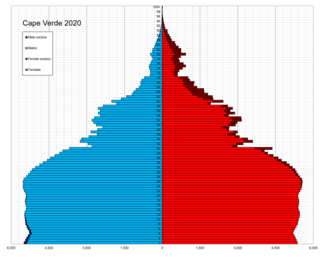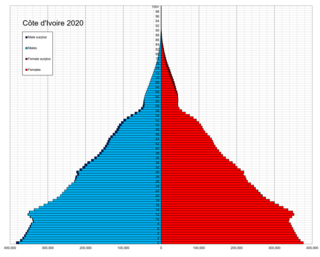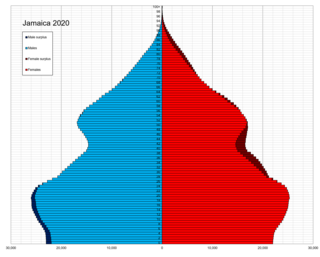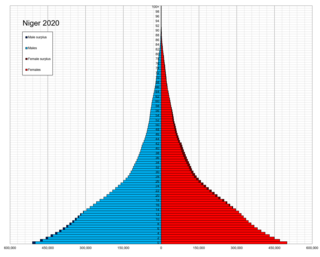
This article is a demography of the population of Antigua and Barbuda including population density, ethnicity, religious affiliations and other aspects of the population.

This article is about the demographic features of the population of Botswana, including population density, ethnicity, education level, health of the populace, economic status, religious affiliations and other aspects of the population.

This article is about the demographic features of the population of Burundi, including population density, ethnicity, education level, health of the populace, economic status, religious affiliations and other aspects of the population.

This article is about the demographic features of the population of Cape Verde, including population density, ethnicity, education level, health of the populace, economic status, religious affiliations and other aspects of the population.

This article is about the demographic features of the population of Ivory Coast, including population density, ethnicity, education level, health of the populace, economic status, religious affiliations and other aspects of the population.

This is a demography of the population of the Dominican Republic including population density, ethnicity, education level, health of the populace, economic status, religious affiliations and other aspects of the population.

This article is a demography of the population of Grenada including population density, ethnicity, education level, health of the populace, economic status, religious affiliations and other aspects of the population.

Jamaica is an island country in the Caribbean. The country had a population of 2,818,596 in 2022, the fourth largest in the region.

This article is about the demographic features of the population of Mali, including population density, ethnicity, education level, health of the populace, economic status, religious affiliations and other aspects of the population.

This article is about the demographic features of Nigeriens, the people of Niger, including population density, ethnicity, education level, health of the populace, economic status, religious affiliations and other aspects of the population.

This article is about the demographic features of the population of Rwanda, including population density, ethnicity, education higher level, health of the populace, economic status, religious affiliations and other aspects of the population. Rwanda's population density, even after the 1994 genocide, is among the highest in Sub-Saharan Africa at 500 inhabitants per square kilometre (1,300/sq mi). This country has few villages, and nearly every family lives in a self-contained compound on a hillside. The urban concentrations are grouped around administrative centers.

This is a demography of the population of Saint Vincent and the Grenadines including population density, ethnicity, religious affiliations and other aspects of the population.

This article is about the demographic features of the population of Seychelles, including population density, ethnicity, education level, health of the populace, economic status, religious affiliations and other aspects of the population.

This article is about the demographic features of the population of Eswatini, including population density, ethnicity, education level, health of the populace, economic status, religious affiliations and other aspects of the population.

This article is about the demographic features of the population of Madagascar, including population density, ethnicity, education level, health of the populace, economic status, religious affiliations and other aspects of the population.

This article is about the demographic features of the population of Uganda, including population density, ethnicity, education level, health of the populace, economic status, religious affiliations and other aspects of the population.

This is a demography of the population of The Bahamas including population density, ethnicity, education level, health of the populace, economic status, religious affiliations and other aspects of the population.

This is a demography of Barbados including population density, ethnicity, education level, health of the populace, economic status, religious affiliations and other aspects of the population.

This article is a demography of the population of Belize including population density, ethnicity, education level, health of the populace, economic status, religious affiliations and other aspects of the population.

The demographic characteristics of Cuba are known through census which have been conducted and analyzed by different bureaus since 1774. The National Office of Statistics of Cuba (ONE) since 1953. The most recent census was conducted in September 2012. The population of Cuba at the 2012 census was 11.2 million. The population density is 100.7 inhabitants per square kilometer, and the overall life expectancy in Cuba is 78.0 years. The population has always increased from one census to the next, with the exception of the 2012 census, when the count decreased by 10,000. Since 1740, Cuba's birth rate has surpassed its death rate; the natural growth rate of the country is positive. Cuba is in the fourth stage of demographic transition. In terms of age structure, the population is dominated (71.1%) by the 15- to 64-year-old segment. The median age of the population is 41.8, making it the oldest in the Americas, and the gender ratio of the total population is 0.99 males per female.




















